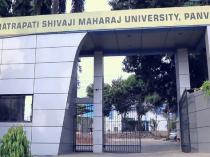I have completed my Masters in structural engineering. How can I apply for Ph.D. degree in CSMIT Panel?
what is the procedure?
-
1 Answer
-
To apply for a Ph.D. degree in CSMIT (assuming it stands for a specific institution or program), you will typically need to follow a specific procedure. Here are some general steps you can consider when applying for a Ph.D. program:
Research the CSMIT Panel: Start by thoroughly researching the CSMIT Panel and its Ph.D. program in structural engineering. Visit their official website, explore their research areas, faculty profiles, admission requirements, and any specific instructions or guidelines provided.
Identify Potential Supervisors: Look for faculty members or research supervisors within the CSMIT Panel who align with your research...more
Similar Questions for you
The total number of seats offered in the BTech course at Lucknow University is 450. Moreover, the number of seats offered in the BTech course at Chhatrapati Shahu Ji Maharaj University is 780. Thus, CSJMU offers more seats than Lucknow University. The eligibility requirements to get admissions into both universities are almost similar, in which, firstly, candidates are required to qualify their Class 12 from Science stream. Additionally, I have secured a valid score in JEE Mains.

The course-wise salary package offered is yet to be released. Meanwhile, check out the table to know more about the packages offered at Chhatrapati Shivaji Maharaj University placement in 2024:
Particulars | Placement Statistics (2024) |
|---|---|
50+ Companies Offered Packages | INR 8 LPA+ |
Chhatrapati Shivaji Maharaj University is known for its decent placement opportunities. Some the top recruiters for Chhatrapati Shivaji Maharaj University placement are listed below:
Chhatrapati Shivaji Maharaj University Top Recruiters | ||
|---|---|---|
HDFC Bank | TCS | Jio |
Aditya Birla Group | Godrej | Wipro |
More than 10 fortune 500 companies took part in the Chhatrapati Shivaji Maharaj University placements 2024. Check out the table for reference:
Particulars | Placement Statistics (2024) |
Fortune 500+ Companies | 10+ |
Chhatrapati Shivaji Maharaj University provides good placements to its graduating students placing them in top companies. Check out the table below to know the key highlights of the Chhatrapati Shivaji Maharaj University placements 2024:
Particulars | Placement Statistics (2024) |
|---|---|
Placement Rate | 73% |
50+ Companies Offered Packages | INR 8 LPA+ |
Total Recruiters | 250+ |
Fortune 500+ Companies | 10+ |
More than 10 fortune 500 companies took part in the Chhatrapati Shivaji Maharaj University placements 2024. Check out the table for reference:
Particulars | Placement Statistics (2024) |
|---|---|
Fortune 500+ Companies | 10+ |
Taking an Exam? Selecting a College?
Get authentic answers from experts, students and alumni that you won't find anywhere else
Sign Up on ShikshaOn Shiksha, get access to
- 65k Colleges
- 1.2k Exams
- 681k Reviews
- 1800k Answers


